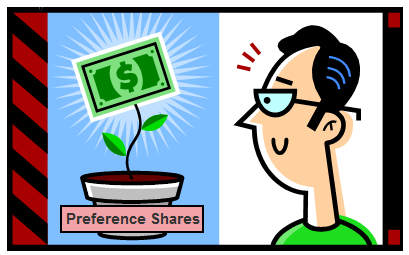What do we mean by Share?
A share is a unit of measure of a shareholders’ interest in the total capital of the company. Share capital of a company is the capital raised through selling of shares. In other words, share capital is substantive fraction of the total capital of the company and can be divided into a large number of equal parts and each part is known as a share.
Companies issue shares to raise capital for business. It is the most important method of raising capital or long term funds by the company. These funds are required for investment in the basic long term requirements of securing infrastructure, machineries, building up operations and capacity etc.
Types of Shares:
A Company can issue two types of shares;
- Preference shares
- Equity shares
What are Equity Shares?
Equity shares are ‘ordinary’ shares which represent ownership in a company. Equity shareholders carry voting rights in a company and are paid dividends out of the profit made by the company. Higher the profits, higher will be the dividend and lower the profits, lower will be the dividends. If the company does not make enough profit to pay out dividend, the equity shareholders will not receive any dividend at all.
What are Preference Shares?
Preference shares have a fixed rate of dividend which is paid to the preference share holders before payment of dividend to Equity shareholders. Preference shareholders are given ‘preference’ in payment of dividend and return of capital during winding up. But unlike ordinary shareholders, preference share shareholders usually do not have voting rights in ordinary matters.
How many types of Preference Shares are there?
There are four types of preference shares which a company can issue; they are –
Cumulative and Non cumulative Preference shares
Cumulative preference shares give the right to the preference shareholders to claim the dividends that are not paid in the previous year (they accrue as ‘arrears of dividends’) and they are paid in preference to ordinary dividends.
For non-cumulative or simple preference shares, any dividends that are unpaid or accrued in the previous year cannot be carried forward to the subsequent year or years in respect of that year, and that is considered lost by the shareholders.
Participating and Non Participating Preference shares
Participating Preference shareholders have the right to receive any remaining profit which is left after payment of dividend to the equity shareholders, while Non Participating Preference shareholders do not have such rights.
Convertible and Non Convertible Preference shares
Convertible Preference Shares are corporate fixed-income securities that the shareholders have the option of converting into a certain number of ordinary shares after a predetermined time span or on a specific date, while Non-Convertible Preference Shares are those which do not have the option of their conversion into the equity shares.
Redeemable and Non Redeemable Preference shares
Redeemable Preference shares are those shares which have to be repaid by the company after a fixed period of time from the date of issue of such shares while Non Redeemable Preference shares cannot be redeemed or repaid by the company except in the event of winding up of the company.
What are the Advantages of Preference Shares?
From a company’s point of view:
Fixed Return:
The dividend payable on preference shares is fixed that is usually lower than that payable on equity shares. Thus they help the company in maximizing the profits available for dividend to equity shareholders.
No voting Right:
Preference shareholders have no voting right on matters not directly affecting their right hence promoters or management can retain control over the affairs of the company.
Flexibility in Capital Structure:
The company can maintain flexibility in its capital structure by issuing redeemable preference shares as they can be redeemed under terms of issue.
No burden of Finance:
Issue of preference shares does not prove a burden on the finance of the company because dividends are paid only if profits are available, otherwise no dividend has to be paid.
No charge on assets:
Non-payment of dividend on preference shares does not create a charge on the assets of the company as is in the case of debentures.
Widens Capital Market:
The issue of preference shares widens the scope of capital market as they provide the safety to the investors as well as a fixed rate of return. If company does not issue preference shares, it will not be able to attract the capital from such moderate type of investors.
From Investor’s point of view;
Regular Fixed Income:
Investors in cumulative preference shares get a fixed rate of dividend on preference share regularly even if there is no profit. Arrears of dividend, if any, are paid in the years of profits.
Preferential Rights:
Preference shares carry preferential right as regard to payment of dividend and as regards repayment of capital in case of winding up of company. Thus they enjoy the minimum risk.
Voting Rights for Safety of Interest:
Preference shareholders are given voting rights in matters directly affecting their interest. It means their interest is safeguarded.
Lesser Capital Losses:
As the preference shareholders enjoy the preferential right of repayment of their capital in case of winding up of company, it saves them from capital losses.
Fair Security:
Preference share are fair securities for the shareholders during cyclic market corrections and depression periods when the profits of the company are down. Also, in case of startup companies, preference shares are first choice of investors, and usually the dividend payment is allowed to accumulate until the company becomes profitable. This is done in order to reduce the already high risk that investors take when they invest in early stage companies.
What are the Disadvantages of Preference Shares?
From Companies’ point of view
Higher Rate of Dividend:
Companies pay higher dividend on these shares than the prevailing rate of interest on debentures of bonds. Thus, it usually increases the cost of capital for the company and debt may be preferred.
Financial Burden:
Most of the preference shares are issued cumulative which means that all the arrears of preference dividend must be paid before anything can be paid to equity shareholders. The company is under an obligation to pay dividend on such shares. It thus, reduces the profits for equity shareholders.
Dilution of Claim over Assets:
The issue of preference shares involves dilution of equity shareholders claim over the assets of the company because preference shareholders have the preferential right on the assets of the company in case of winding up.
Adverse effects on credit worthiness:
The credit worthiness of the company is seriously affected by the issue of preference shares. The creditors may anticipate that the continuance of dividend on preference shares and suspension of dividend on equity capital may deprive them of the chance of getting back their principal in full in the event of dissolution of the company, because preference capital has the preference right over the assets of the company.
Tax disadvantage:
The taxable income is not reduced by the amount of preference dividend while in case of debentures or bonds, the interest paid to them is deductible in full.
From Investors’ point of view:
No Voting Rights:
The preference shareholders do not enjoy any voting right except in matters directed affecting their interest.
Fixed Income:
The dividend on preference shares other than participating preference shares is fixed even if the company earns higher profits.
No claim over surplus:
The preferential shareholders have no claim over the surplus. They can only ask for the return of their capital investment in the company.
No Guarantee of Assets:
Company provides no security to the preference capital as is made in the case of debentures. Thus their interests are not protected by the assets of the company.
Therefore, as we can see that Preference Shares are have features of both stocks and bonds such as assured returns.
In fact they are like fixed income instruments- their value remains the same i.e. the price at which the company issued them, while their dividends are fixed, just like interest payments.
Sometimes though, preference shares have the option to be converted into ordinary shares.
In case, where the company is winding up and its assets (land, buildings, offices, machinery, furniture etc) are being sold, the money that comes from the sale is given to the shareholders. After all, shareholders invest in a business and own a portion of it. Preference shareholders get the money first. Their accounts are settled before the ordinary shareholders, who are the last to get paid.
Preference shares can be tailored to give some control to an investor in a private company by contract (through veto powers and director seats) and through the company’s articles of association. However Preference shareholders will not be able to control a public company or a private company that will be doing an IPO (Initial Public Offering) soon.











